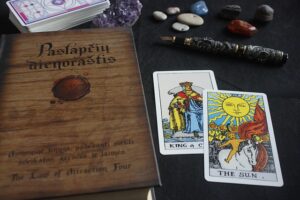
Voodoo love spells vs. Traditional love spells: What’s the difference?
Table of Contents
The allure of love spells has captivated people across cultures for centuries. Whether seeking to attract a new partner, heal a broken relationship, or deepen emotional bonds, love spells are diverse in their methods and intentions. Among the various types of love magic, Voodoo love spells stand out for their unique cultural roots and practices. In contrast, traditional love spells encompass a wide array of rituals and practices influenced by different spiritual and cultural backgrounds. This article explores the fundamental differences between Voodoo love spells and traditional love spells, delving into their origins, methodologies, beliefs, and ethical considerations.
Love magic refers to the practice of using rituals, spells, or incantations to influence romantic relationships. Throughout history, various cultures have developed their own interpretations of love magic, each with unique symbols, tools, and methods.
Types of love magic
- Attraction spells: Designed to draw new love into one’s life.
- Binding spells: Used to strengthen existing relationships and create commitment.
- Healing spells: Aim to mend broken relationships or resolve emotional issues.
- Cleansing spells: Remove negative energy affecting romantic connections.
Understanding these distinctions is essential when comparing Voodoo love spells and traditional love spells.

The origins of Voodoo Love Spells
Historical context
Voodoo, also known as Vodou, is a spiritual tradition that originated in West Africa and developed further in the Americas, particularly in Haiti and New Orleans. Voodoo combines elements of African spirituality, indigenous practices, and influences from Catholicism.
Key elements of Voodoo Love Magic
- Loa: Voodoo spirits who play a significant role in rituals and spells.
- Dolls and poppets: Often used to represent individuals, allowing practitioners to channel their intentions more effectively.
- Herbs and offerings: Commonly utilized in rituals to attract specific energies and outcomes.
Voodoo love spells are deeply rooted in cultural traditions, reflecting the beliefs and practices of those who practice them.
Traditional love spells: A broad overview
Historical context
Traditional love spells vary widely depending on cultural backgrounds. They can be found in various forms across cultures, including European folk magic, Native American traditions, and modern Wiccan practices. Each tradition has its unique approach to love magic.
Key elements of traditional love magic
- Elements of nature: Many traditional spells incorporate natural elements, such as herbs, crystals, and candles, symbolizing different intentions.
- Rituals and incantations: Practitioners often perform specific rituals or recite incantations to invoke love energy.
- Astrological timing: Some traditions emphasize the importance of timing, aligning spells with moon phases or astrological events for enhanced effectiveness.
Traditional love spells may not have the same cultural specificity as Voodoo spells but can be tailored to individual beliefs and practices.

Key differences between Voodoo and Traditional Love Spells
1. Cultural roots and context
Voodoo Love Spells:
- Are deeply embedded in the cultural and spiritual traditions of the African diaspora.
- Utilize the belief in Loa and ancestral spirits to facilitate love magic.
- Are often performed in communal settings with specific rituals passed down through generations.
Traditional Love Spells:
- Span a broad range of cultures and spiritual practices, lacking a singular narrative.
- May incorporate elements from various traditions (e.g., Wicca, folk magic) without the same emphasis on a pantheon of spirits.
- Can be personalized based on the practitioner’s beliefs, often reflecting individual preferences.
2. Tools and techniques
Voodoo Love Spells:
- Frequently involve the use of dolls, or poppets, as focal points for intentions.
- Often require specific herbs, offerings, and ritualistic actions to invoke the Loa’s assistance.
- Rituals may include singing, dancing, and other communal practices.
Traditional Love Spells:
- Typically utilize herbs, candles, crystals, and other natural elements.
- May include a wider variety of incantations or chants that differ in formality and complexity.
- Focus more on individual practice and personal belief systems.
3. Spiritual framework
Voodoo Love Spells:
- Are rooted in a spiritual framework that includes the belief in interconnectedness between humans and spirits.
- Engage specific Loa, each associated with various aspects of life, including love, to guide practitioners.
- Emphasize the importance of respect and reciprocity with the spirit world.
Traditional Love Spells:
- May lack a structured spiritual framework and focus more on personal power, intention, and energy manipulation.
- Do not necessarily require the invocation of spirits or deities, though some traditions may include this element.
- Allow for greater flexibility in interpretation and practice.
4. Ethics and intentions
Voodoo Love Spells:
- Are often governed by ethical considerations rooted in the principles of respect, balance, and community.
- Practitioners are encouraged to consider the impact of their spells on others, promoting harmony and healing.
Traditional Love Spells:
- Vary in their ethical considerations depending on the practitioner’s beliefs.
- Some may emphasize the importance of consent and free will, while others may focus on the practitioner’s desires.

The role of intention and belief
Both Voodoo and traditional love spells underscore the significance of intention and belief.
Intention
Setting a clear intention is crucial in both practices, as it shapes the outcome of the spell. Practitioners are encouraged to articulate their desires clearly, whether seeking to attract love, heal relationships, or strengthen bonds.
Belief
The effectiveness of love magic is often linked to the practitioner’s belief in the process. The confidence and faith one has in their abilities to manifest love can greatly influence the success of the spell. This psychological aspect plays a vital role in both Voodoo and traditional love magic.
Conclusion
Voodoo love spells and traditional love spells represent two distinct approaches to the art of love magic, each with its unique cultural roots, methodologies, and ethical considerations. While Voodoo love spells are deeply intertwined with the spiritual traditions of the African diaspora, traditional love spells encompass a broad range of cultural practices and beliefs.
Ultimately, both types of love magic emphasize the importance of intention, belief, and ethical considerations. Whether one chooses to explore Voodoo love magic or traditional love spells, understanding the nuances of each practice can enhance the effectiveness of the spells and foster meaningful connections in the realm of love.
As individuals navigate their desires for love and connection, they can draw upon the rich tapestry of magical traditions to find the path that resonates most deeply with their hearts and souls.
Bibliography:
1. Spells and Psychics. Voodoo Love Spells That Are Really Powerful: Works & Myths. Examines the immediate effects of voodoo love spells, their historical roots, and the necessity of skilled practitioners to ensure success. Retrieved from spellsandpsychics.co.za.
2. SpellsHelp. Voodoo Love Spells for Non-Initiates. Offers guidance for novice spellcasters on crafting and using voodoo dolls to influence romantic outcomes, with an emphasis on proper ritual and pronunciation. Retrieved from spellshelp.com.
3. Erzulie’s. When Love Spells Work or Fail in Voodoo Magic. Analyzes reasons voodoo love spells may not succeed, including spiritual misalignment and unresolved emotional issues. Retrieved from erzulies.com.
4. Spells and Psychics. Effective Love Spells: Dark Magic and Beyond. Discusses the transformative power of dark magic in love spells and the ethical concerns surrounding their use. Retrieved from spellsandpsychics.co.za.
5. Haitian Vodou. Most Powerful Love Spells: Ensure Your Spell is the Strongest. Details techniques for casting potent love spells, emphasizing the importance of personalized rituals and expert guidance. Retrieved from haitian-vodou.com.




